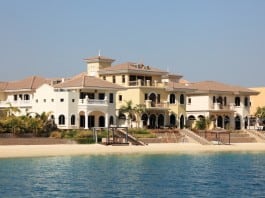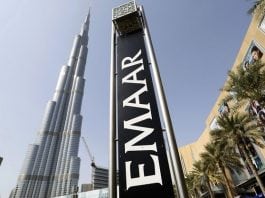Jones Lang LaSalle, the world’s leading real estate investment and advisory firm has today released its ‘Top Trends for 2011’ shaping UAE real estate in the coming year and beyond.
Craig Plumb, Head of Research, Jones Lang LaSalle MENA said: “The UAE is a continuously evolving and maturing real estate market. It is increasingly reverting to its core strengths such as services, trade, tourism, transport and logistics. In terms of capital values and rental trends, we continue to observe the unfolding of two tier markets across different sectors. Good quality product remains attractive particularly in the logistics and residential markets. With continued commitment to developing infrastructure, the UAE will remain attractive to investors around the region.â€
The key predictions are:
11. Infrastructure is key driver for real estate recovery
The UAE has over US$ 45 billion of future projects announced in the pipeline and has one of the highest levels of per capita transport infrastructure spending globally, augmenting its investment edge within the broader MENA region. Across the UAE, this investment will stimulate growth and will be a key driver for market recovery in 2011. Increasing investments in major transport infrastructure across the UAE will fill development gaps, create jobs and ultimately create more demand for good quality real estate in the country.
10. From competition to coordination in UAE
Increasing functional harmony between the emirates will see greater economic integration across the UAE, which will lead to greater economic stability, job growth and ultimately benefit the UAE real estate market. More specifically, the two primary markets, Abu Dhabi and Dubai are complementary and have strong synergies, which together enhance the UAE’s competitiveness in the region.
9. Transaction levels to remain subdued in 2011
Low transaction volumes persist and are expected to remain subdued in 2011. Even though there is growing investor interest in the local real estate markets, the shortage of investment grade properties at realistic prices will continue to constrain transaction activity. This reflects an international trend among investors seeking lower risk and higher returns, which is currently resulting in capital outflows.
8. Light industrial / logistics offers low risk and stable yields
In 2011, the light industrial / logistics segment will be the best performing sector in the UAE real estate market. Within the MENA region, the UAE is expected to be the preferred location for logistics firms, a trend further strengthened by the country’s refocus on and increasing investment in trade and transportation. Occupier demand will cluster around locations with strong infrastructure and transportation connectivity. Investor interest remains focused on institutional grade properties with long term leases and strong tenant covenants because of the stable yields and lower risk.
7. From return on ego to return on equity
In 2011, the Dubai hotel market is expected to stabilise while Abu Dhabi will continue to soften. The UAE’s hospitality sector will see a departure from the grandiosity of previous projects, often driven by publicity and ego and a return to fundamentals. We expect to see greater focus on core factors such as the return on equity and financial performance, which in turn, will drive the decision making process.
6. From super regional malls to community centres
The UAE’s retail market will shift focus from super regional malls to community retail centres over the coming year. The market for super regional malls, driven by tourism and built as entertainment driven destinations, is now saturated. In terms of new development and repositioning of existing projects, the next opportunity is community-oriented retail centres with a focus on meeting the needs of residents within the catchment neighbourhood. Various municipal authorities in the UAE are encouraging a local focus, providing additional support for this trend.
5. Increased office leasing activity
Persistent oversupply of office space continues in the UAE’s two major urban centers and is likely to encourage office leasing demand. Increasing supply leads to greater affordability and an improvement in quality of office space available. Tenants are taking advantage of the greater value proposition and consolidating operations and/or upgrading to better quality properties.
4. Selective stability in residential market
In 2011, sale prices will stabilise for select assets in specific locations; however, average prices and rents are expected to continue to decline in both Abu Dhabi and Dubai. The largest declines are expected for low quality properties in less popular locations. In terms of the sales market, economic uncertainty and job security will overshadow mortgage availability as the primary causes of low transaction volumes. As rents decline, the tenant-friendly environment will continue to directly and indirectly stimulate demand.
3. Rental market directions – Dubai and Abu Dhabi
In 2011, the Abu Dhabi and Dubai rental markets will increasingly move in favor of the tenant. While this trend has been ongoing since 2009, the markets are at different points on their real estate cycles. In Dubai, rents continue to fall, but the rate of decline is shrinking and there are strong indications that many segments are approaching the bottom. In contrast, rents in Abu Dhabi are expected to continue to decline in the year ahead.
2. Lower supply projections than anticipated to help smooth out cycle
For 2011, our research indicates that projected new supply for the year will be lower than previously expected across the residential, office, retail and hotel segments. The amount of anticipated new supply is decreasing due to tighter government control, official cancellation of projects (115 projects by Dubai’s Real Estate Regulatory Agency), decreased liquidity and rephasing of projects by developers. Although total supply continues to increase, Dubai is past the peak of its annual pipeline of new supply. Abu Dhabi is still approaching the peak for new supply.
1. Property / asset management is #1 risk for real estate
While supply is often considered the main risk for real estate in the UAE, the quality of property and asset management is of prime concern. Key demand drivers are asset management, which focuses on investment returns and property management, which, together with proper facilities maintenance, aims to maximise revenues and optimise costs. The quality of management will differentiate the winners from the losers – new buildings represent a substantial portion of total real estate in Abu Dhabi and Dubai and require professional management to maintain the capital value of assets.
Jesse Downs, Director of Management Consulting at Jones Lang LaSalle MENA concluded: “Within the Abu Dhabi and Dubai property markets, development and management trends as well as the overall supply and demand dynamics are driving bifurcation of prices based on asset quality.
Greater integration between the emirates will lead to economic stability, job growth and ultimately benefit real estate markets across the UAE. While the industry generally remains on the road to recovery, new demand drivers such as the improvement of transportation connectivity and infrastructure projects will substantially increase the attractiveness of the UAE.
This is compounded by the regional political situation elsewhere within the MENA region where real estate markets are currently facing challenges. The UAE’s relative stability demonstrates its strong long term fundamentals and has consequently solidified its role as a strategic regional hub.â€










